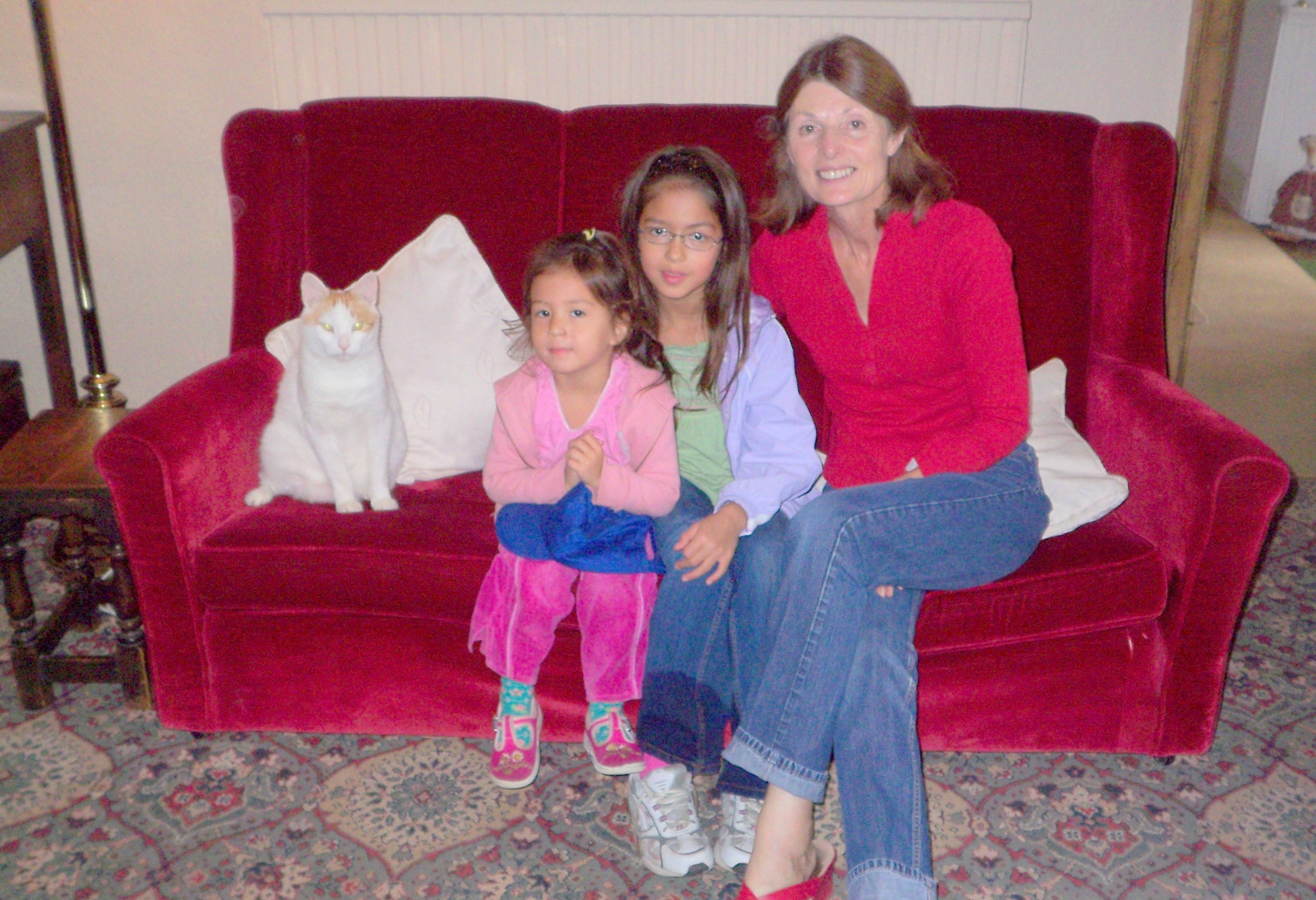
 We went on a trip to Wales that wokred out splendidly, but in a highly contrary way. I mentioned going to Wales at lunch at Nuffield, and BN told me he had stayed at an old farm bed and breakfast called Tan House Farm. I googled it and made a reservation for Friday night. Then he kindly emailed me with the web address, and it turned out there was another Tan House Farm bed ban breakfast on the Welsh border. I googled again, and found there were also, quite separate, the Tan House Farm Cottages. It seems that sheep farming country needed a lot of tanneries. Anyway, our Tan House Farm, run by the Powell family for 3 generations, was an exceptionally homey place to stay. Glynis provided the rooms with chocolate, biscuits, tea, coffee, and cocoa, as well as an impressively tasteful selection of children and adult books, and games. The house was very old– 1600s or 1700s probably, but they don’t have good records– with black beams showing and doorways barely above my hair. It is a working farm, and Glynis and her eldest daughter, living in the village but spending a lot of time in a “den” in one of the farm buildings, told me about how they raise sheep for mutton but are hindered by the late foot-and-mouth disease scare and chronic TB fears, about how they do grazing on army land as well as their own, about the profitability of potato farming for some people in the area, and about how Mrs. Powell grew up on a farm with her 6 sisters and one brother.
We went on a trip to Wales that wokred out splendidly, but in a highly contrary way. I mentioned going to Wales at lunch at Nuffield, and BN told me he had stayed at an old farm bed and breakfast called Tan House Farm. I googled it and made a reservation for Friday night. Then he kindly emailed me with the web address, and it turned out there was another Tan House Farm bed ban breakfast on the Welsh border. I googled again, and found there were also, quite separate, the Tan House Farm Cottages. It seems that sheep farming country needed a lot of tanneries. Anyway, our Tan House Farm, run by the Powell family for 3 generations, was an exceptionally homey place to stay. Glynis provided the rooms with chocolate, biscuits, tea, coffee, and cocoa, as well as an impressively tasteful selection of children and adult books, and games. The house was very old– 1600s or 1700s probably, but they don’t have good records– with black beams showing and doorways barely above my hair. It is a working farm, and Glynis and her eldest daughter, living in the village but spending a lot of time in a “den” in one of the farm buildings, told me about how they raise sheep for mutton but are hindered by the late foot-and-mouth disease scare and chronic TB fears, about how they do grazing on army land as well as their own, about the profitability of potato farming for some people in the area, and about how Mrs. Powell grew up on a farm with her 6 sisters and one brother.
Their farm is adjacent to Dore Abbey, a monastery whose chapel became the village church. The church was unusually impressive because it is huge for a village church, with cathedral-height gothic arches and stained glass, but is not decorated and “used” like a cathedral would be. Only one chapel is used for local church services. It had a good book of stories about WW I veterans, including a survivor whose plane crashed, who was well treated and consoled by some Reichstag members, and who became the village doctor for 40 years after the war,known to everyone. He sounds like my Uncle Fred Scheppler, a WW I vet who was gassed in the trenches and became the Somonauk village doctor for 40 years. But what really impressed me was having the stories of the war dead, not just their names. Also, there were many lines of verse on the tombstones in the cemetery, and many Christian sentiments there. They have a concert series at the abbey too, which included a a recent recital by John Lill, an old pianist who was on staff at the Royal College of Music while Helen was there in the 80s.
My three major goals of the trip were the Roman Legion Museum in Caerleon, the Big Pit coal mine in Blanevon, and Tintern Abbey. We didn’t make it to any of them. But that was because we came across plenty to do as we went along. We ate peanut butter and honey sandwiches in a field in the Cotswolds…perhaps more later.